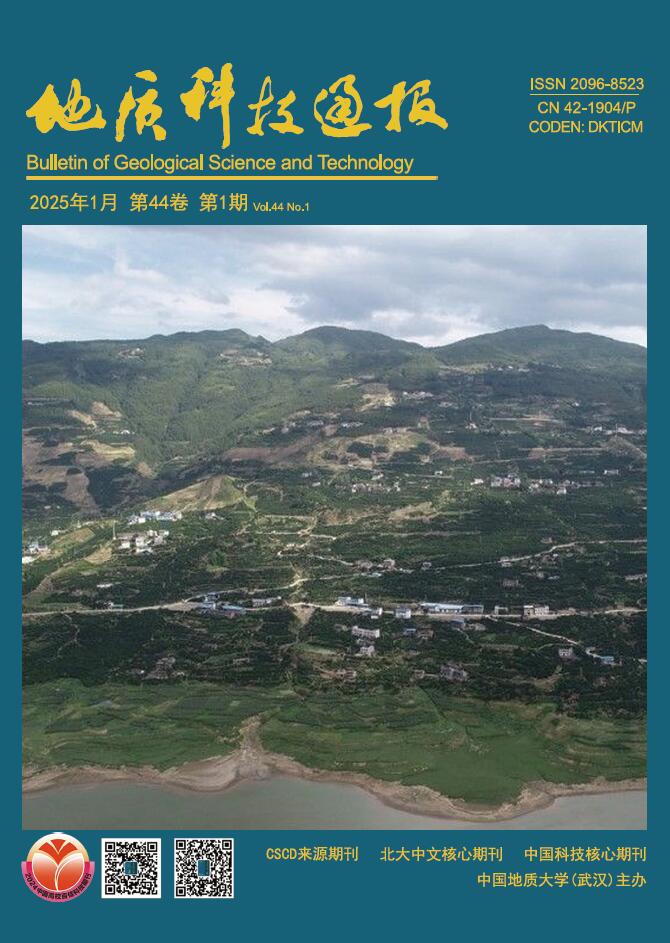Online First
Display Method:
, Available online , doi: 10.19509/j.cnki.dzkq.tb20240772
Abstract:
, Available online , doi: 10.19509/j.cnki.dzkq.tb20240334
Abstract:
, Available online , doi: 10.19509/j.cnki.dzkq.tb20240530
Abstract:
, Available online , doi: 10.19509/j.cnki.dzkq.tb20240366
Abstract:
, Available online , doi: 10.19509/j.cnki.dzkq.tb20240373
Abstract:
, Available online , doi: 10.19509/j.cnki.dzkq.tb20240386
Abstract:
, Available online , doi: 10.19509/j.cnki.dzkq.tb20240387
Abstract:
, Available online , doi: 10.19509/j.cnki.dzkq.tb20240709
Abstract:
, Available online , doi: 10.19509/j.cnki.dzkq.tb20240522
Abstract:
, Available online , doi: 10.19509/j.cnki.dzkq.tb20240711
Abstract:
, Available online , doi: 10.19509/j.cnki.dzkq.tb20240425
Abstract:
, Available online , doi: 10.19509/j.cnki.dzkq.tb20240022
Abstract:
, Available online , doi: 10.19509/j.cnki.dzkq.tb20240348
Abstract:
, Available online , doi: 10.19509/j.cnki.dzkq.tb20240520
Abstract:
, Available online , doi: 10.19509/j.cnki.dzkq.tb20240325
Abstract:
, Available online , doi: 10.19509/j.cnki.dzkq.tb20240421
Abstract:
, Available online , doi: 10.19509/j.cnki.dzkq.tb20240256
Abstract:
, Available online , doi: 10.19509/j.cnki.dzkq.tb20240456
Abstract:
, Available online , doi: 10.19509/j.cnki.dzkq.tb20240351
Abstract:
, Available online , doi: 10.19509/j.cnki.dzkq.tb20240063
Abstract:
, Available online , doi: 10.19509/j.cnki.dzkq.tb20240454
Abstract:
, Available online , doi: 10.19509/j.cnki.dzkq.tb20240324
Abstract:
, Available online , doi: 10.19509/j.cnki.dzkq.tb20240149
Abstract:
, Available online , doi: 10.19509/j.cnki.dzkq.tb20240094
Abstract:
, Available online , doi: 10.19509/j.cnki.dzkq.tb20240171
Abstract:
, Available online , doi: 10.19509/j.cnki.dzkq.tb20240130
Abstract:
, Available online , doi: 10.19509/j.cnki.dzkq.tb20240191
Abstract:
, Available online , doi: 10.19509/j.cnki.dzkq.tb20240099
Abstract:
, Available online , doi: 10.19509/j.cnki.dzkq.tb20240091
Abstract:
, Available online , doi: 10.19509/j.cnki.dzkq.tb20240103
Abstract:
, Available online , doi: 10.19509/j.cnki.dzkq.tb20240082
Abstract:
, Available online , doi: 10.19509/j.cnki.dzkq.tb20230644
Abstract:
, Available online , doi: 10.19509/j.cnki.dzkq.tb20230583
Abstract:
, Available online , doi: 10.19509/j.cnki.dzkq.tb20230689
Abstract:
, Available online , doi: 10.19509/j.cnki.dzkq.tb20230690
Abstract:
, Available online , doi: 10.19509/j.cnki.dzkq.tb20240050
Abstract:
, Available online , doi: 10.19509/j.cnki.dzkq.tb20230711
Abstract:
, Available online , doi: 10.19509/j.cnki.dzkq.tb20230546
Abstract:
, Available online , doi: 10.19509/j.cnki.dzkq.tb20230695
Abstract:
, Available online , doi: 10.19509/j.cnki.dzkq.tb20230657
Abstract:







